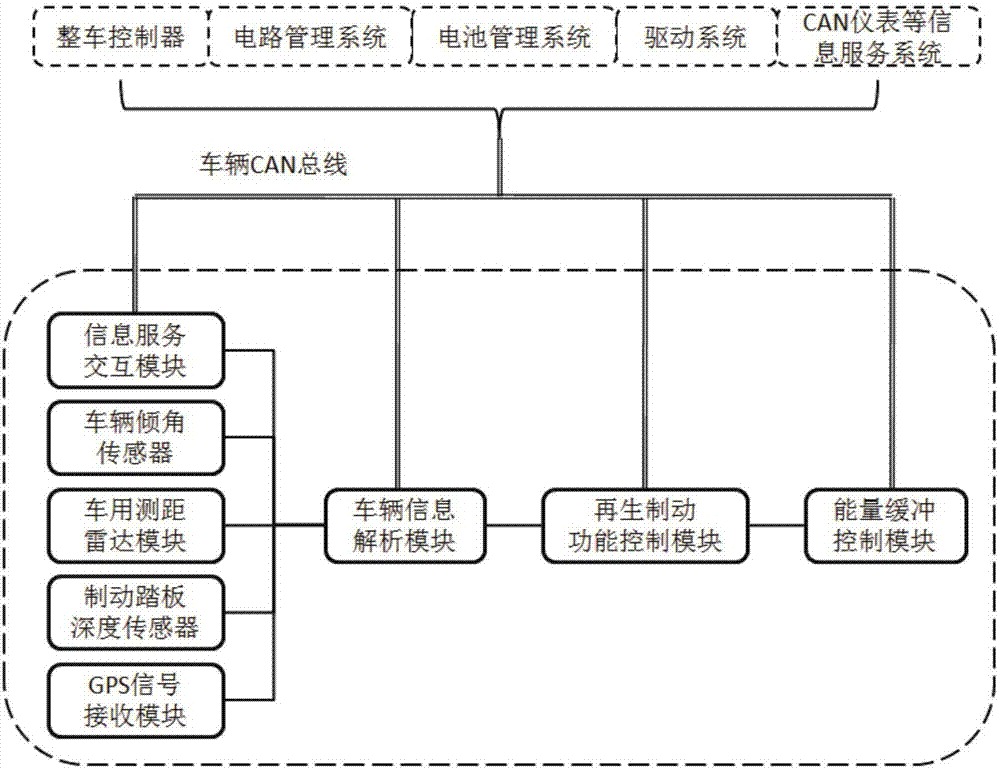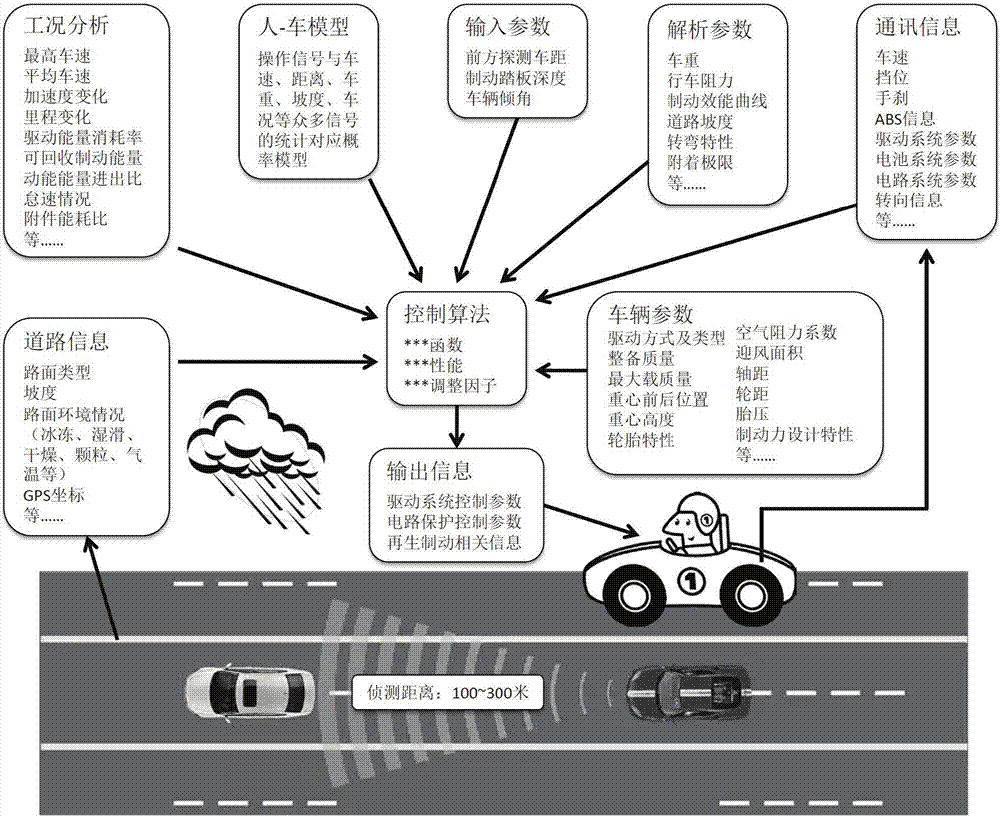Regenerative braking control system and method of active electric vehicle
A technology for regenerative braking and electric vehicles, which is applied in electric braking systems, electric vehicles, vehicle components, etc. It can solve the problems of low regenerative braking energy recovery efficiency, lack of self-learning and adaptability, lack of control ideas and applications, etc. problems, to achieve the effect of improving the braking energy recovery effect, cultivating energy-saving operation habits, and good energy-saving operation habits
- Summary
- Abstract
- Description
- Claims
- Application Information
AI Technical Summary
Problems solved by technology
Method used
Image
Examples
Embodiment Construction
[0048] In order to understand the technical content of the present invention more clearly, the following examples are given in detail.
[0049] The active electric vehicle regenerative braking control system includes an information collection unit, an information interaction unit, an information analysis unit and a control unit, wherein the information collection unit is used to collect vehicle information, and the information interaction unit is used to receive driver Feedback information to realize human-vehicle information interaction, the information analysis unit is used to analyze the vehicle information collected by the regenerative braking control system, and the control unit is used to obtain driving information based on the analyzed vehicle information acquired by it. The driver's braking intention, and provide corresponding control parameters according to the braking intention, to control the braking situation of the electric vehicle, the information collection unit ...
PUM
 Login to View More
Login to View More Abstract
Description
Claims
Application Information
 Login to View More
Login to View More - R&D
- Intellectual Property
- Life Sciences
- Materials
- Tech Scout
- Unparalleled Data Quality
- Higher Quality Content
- 60% Fewer Hallucinations
Browse by: Latest US Patents, China's latest patents, Technical Efficacy Thesaurus, Application Domain, Technology Topic, Popular Technical Reports.
© 2025 PatSnap. All rights reserved.Legal|Privacy policy|Modern Slavery Act Transparency Statement|Sitemap|About US| Contact US: help@patsnap.com


